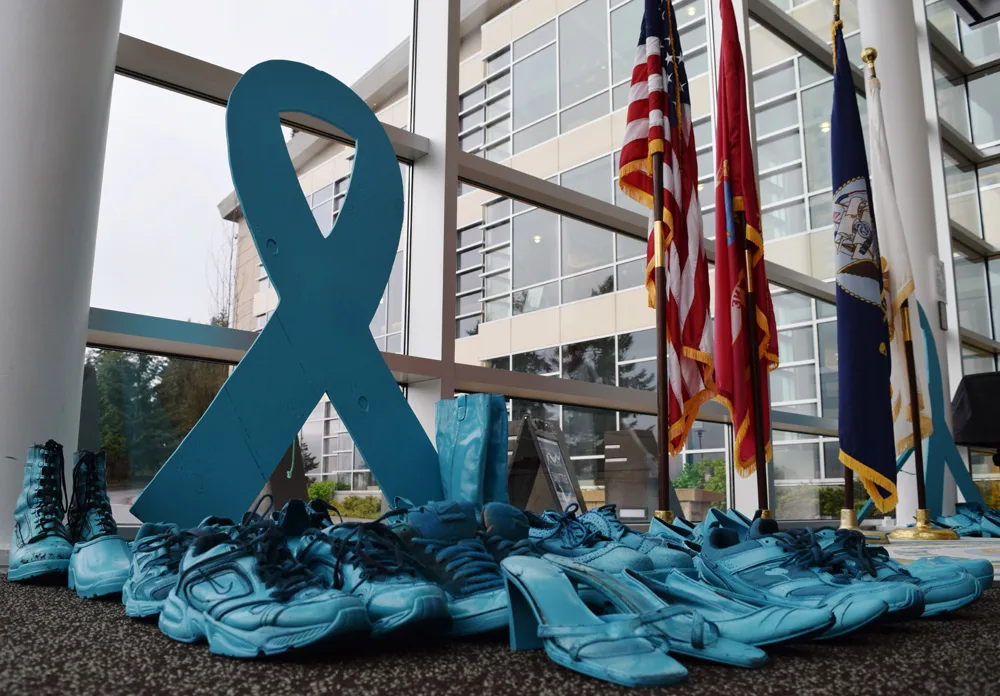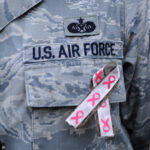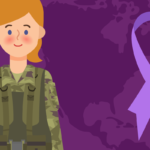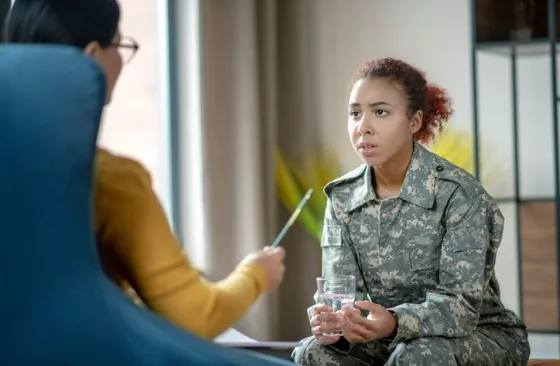Jennifer Dane had been in the Air Force only a few months when she became one of the 13,000 women who experience military sexual trauma (MST) every year.
At 22, Dane was older than a lot of her classmates at training for her intelligence job. She felt a level of confidence and security because of her life experience and that made her more trusting than she might otherwise have been.
The night of her assault, both Dane and the man who assaulted her had been drinking, Dane to the point of blacking out. But she remembers rejecting his advances clearly three times. He ignored her protests. Days later, she began the vulnerable and lonely process of reporting her assault and seeking justice.
That 2010 experience is now half-a-lifetime ago for Dane, but it continues to motivate her advocacy on behalf of current service members and her push for policy that creates a culture of safety, protects survivors and holds abusers accountable.
The military acknowledges the detrimental effect of MST on mission readiness. According to a guide published by the Defense Department for leaders, sexual assaults frequently result in “unplanned losses” to units as survivors often must step away from their duties to receive care and support. They also erode trust and unity, the guide stated, qualities required “for any mission to succeed.”
In 2021, Dane, then executive director of the Modern Military Association of America, participated in the Pentagon’s Independent Review Commission on Sexual Assault in the Military, giving testimony on her experiences and providing recommendations to the board. Some of her recommendations, which included better care for LGBTQ+ victims of sexual violence, were accepted, she said.
These issues are deeply intertwined with Dane’s story — as a result of the probe opened into her assault, Dane, who is a lesbian, became one of the last service members to be investigated under the Don’t Ask, Don’t Tell ban on LGBTQ+ service members serving openly. That policy was overturned in December 2010.
“[When I participated in the Independent Review Commision, it] was the first time I felt like anybody really listened,” Dane said. “And it was so empowering.”
That commission, which delivered 82 recommendations ranging from accountability improvements and culture changes to care and support for survivors, represented an aggressive commitment from Defense Secretary Lloyd Austin to do more to counter what he called the “scourge” of MST in the military. Austin directed the military services to set up a standard process for separating troops who sexually harass comrades, establish career tracks for specially trained MST lawyers and investigators, and work with Congress to create dedicated offices for each branch to handle MST prosecutions.
Causes for hope
There are other recent military policy developments resulting from the 2021 review commission, sparking hope for service members dealing with sexual assault.
In July, President Biden signed an executive order removing key prosecution oversight authorities from military commanders for certain categories of offenses, including sexual assault, domestic violence and murder. The oversight is now in the hands of independent military prosecutors. This change had long been promoted by advocates who said the existing military system left assault survivors vulnerable by putting their fate in the hands of the commanders who also had authority and influence over their military careers. It was one of the recommendations to emerge from the independent review board.
In another case that made headlines in July, the U.S. government agreed to pay nearly $1 million to a retired Army colonel who alleged she’d been sexually assaulted by an Air Force leader who’d go on to become the vice chairman of the Joint Chiefs of Staff. The case represented an extraordinarily rare instance of a sexual assault settlement in the case of a very senior military officer.
“I thought that was incredible,” Dane said. “It’s the first time we’ve ever seen that happen, at least that I know of, at a pretty high profile.”
Culture in crisis
Despite some progress, statistics show that MST remains a serious and urgent problem. The most recent prevalence report on sexual assault in the military, released in 2022, shows that about 1 in 12 military women reported experiencing unwanted sexual contact within the last year. Survey responses showed a declining level of trust in the military to protect survivors, treat them with respect and ensure their safety. Slides released by the military showing the decline in trust spell out the problem: “Decreased trust often impacts military service as a retention issue.” In other words, troops who don’t feel safe in service will opt to leave, diminishing the military’s trained and proficient workforce.
Trends around holding offenders responsible in reported military sexual assaults are similarly troubling. Since 2012, prosecution rates in sexual assault cases have dropped from 68% to 37% in 2022.
The VA spells out the personal costs of MST, saying it can “negatively affect a person’s mental and physical health, even many years later,” and is linked to a range of symptoms including depression, use of alcohol or drugs as an escape, sleep issues, and difficulties with anger and other strong emotions.
In addition to personal and professional costs of MST, Dane said she wants to see the military pay more attention to understanding and honoring the principles of consent.
She added that any change will likely be generational and driven by a better understanding of the issues, rather than mere policy changes.
Also important, Dane said, is cultivating an understanding that sexual assaults in the military affect the overall force, and should concern everyone.
“We put our lives on the line. Whether we deploy or not, we’re committed to this country,” she said. “And the one thing we can do is keep our troops safe and safe from one another … make sure we’re taking care of them, because they take care of us.”
Resources
- DoD Sexual Assault Prevention and Response
- DoD Safe Helpline
- Victim/Witness Assistance Program
- Victim’s Legal Counsel
- Veterans Affairs Military Sexual Trauma
This educational resource was created with support from the Ready, Healthy & Able program funders.
The appearance of U.S. Department of Defense (DoD) visual information does not imply or constitute DoD endorsement.















